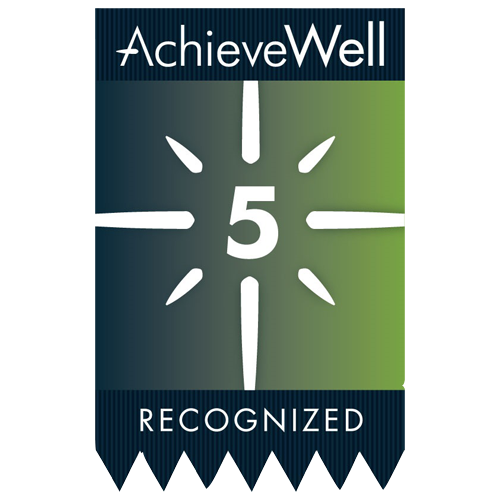Health Benefit Analysis
for Business Development
Health Benefit Analysis Informing Long-Term Business Development
As an employer, you are all too aware of the substantial business impact a health benefits plan for employees has on your company. You also know you can always count on the cost of healthcare moving in one direction each and every year, and that direction is up. How much the cost of healthcare will rise in any given year is predicted by many industry experts, but any such prediction may or may not be accurate. In addition, you never know when something like a global pandemic might come along and turn everything upside down. In the face of such uncertainties, is health benefit analysis informing long-term business development even possible?
Dealing with Present Reality, Planning for an Uncertain Future
To answer the question posed above, the only reasonable response is to make the most accurate predictions possible by leveraging powerful data analytics in an ongoing effort to modify and revise the identification of trends and patterns in the data as it is collected. It is a daunting task, but LHD is confident in its ability to leverage data into actionable insights, even in the face of an uncertain future. What’s required on the part of employers is readiness to be agile in their responses to emerging trends. Being nimble enough to pivot quickly will be the key to weathering uncertainty.
The Factors to Consider Change from Year to Year
What every employer wants to know, of course, is how much the cost of health care and health benefits will rise in any given year. It’s always a moving target, and one that must be informed at least in part on what sorts of things happened in the previous year that will impact costs in the current year. Taking 2021 as an example, predictions have been for a slightly higher rise in the cost of health benefits. During the height of the pandemic during 2020, many elective procedures were put on hold or cancelled outright. Not know when the pandemic will be “over” creates uncertainty around what the demand will be for those elective procedures in 2021. If demand bounces back in full, then it could drive prices significantly higher, according to how the law of supply and demand works in economics. If demand doesn’t bounce back in full, the rise in costs could be lower.
Additional uncertainties around the pandemic center on when it will be “over.” Rolling out highly effective vaccines gave people hope about “turning the corner.” But then vaccine rates dropped precipitously as it was discovered there were many millions of people who fall under the general umbrella of “vaccine hesitancy.” Complicating matters further is the emergence of the “delta variant” that was immediately seen to be far more transmissible than previous variants. What if an even more virulent variant emerges? What will the long-term impacts of something like a COVID-19 pandemic be not only on the healthcare system as far as treating the disease, but on individuals in the overall population?
2020 forced a lot of routine healthcare services to go virtual, which seemed to work well in many instances. But when will the data be able to tell us whether virtual healthcare results in comparable or better health outcomes in people’s lives? Could a larger ongoing share of virtual healthcare services help contain or optimize overall costs? Or could it add costs to an already expensive system? And when will the data give clarity on such questions?
There can be no doubt that something like a pandemic has a profound impact on health care providers. If they lost significant revenues in one year, will they attempt to recoup losses by forcing fee-for-service payment arrangements that wipe out previous progress made in alternative delivery and payment models such as a value-based model. Will the impacts on the financial viability of healthcare provider groups force a round of consolidations? If so, how will that impact costs, quality of care, and outcomes for patients?
Another factor is what’s happening with pharmaceutical costs. It seems there always new treatments and therapies emerging, but it also seems a growing percentage of those new offerings are extremely expensive. Patients should be able to get whatever drug they need, but the question is at what cost to the patient and to the employer’s prescription drug plan?
Uncertainties like those mentioned above can make short-term budgeting and rate setting a very difficult challenge. And to what extent do such short-term challenges impact longer-term investment in employee health and wellness from a business development perspective?
Staying the Course on Investing in Workforce Health and Wellness
There will always be uncertainties and tumultuous events that wreak havoc on short-term planning and budgeting and rate setting efforts. But it’s also true that in the bigger picture of long-term business development, investing now and investing consistently in improving the health and wellness of your employees will pay big dividends over time.
The payoff comes in the form of healthier workers, which translates into employees being more engaged, more productive when they’re at work, and fewer days away from work because of illness and other health issues, as well as fewer and smaller health claims. It’s a triple-win combination of highly effective health benefits and wellness programs, high-performing employees, and better financial results. This creates a virtuous cycle in which top-line revenues increase while bottom-line expenses decrease.
Because of the kinds of short-term uncertainties mentioned previously, many employers are reticent to make the up-front investment required to see long-term business development benefits based on health benefits and wellness programs. However, it is necessary to remind yourself and trust in what we’ve seen play out across hundreds of clients over many years that all had their uncertainty challenges: Healthy employees cost you less, plain and simple.
A simple example is obesity. Everyone knows being obese is not healthy. One study found that obese employees were absent on average thirteen times more than non-obese employees and incurred almost seven times as many medical claims costs. An investment in workplace wellness programs aimed at reducing obesity through better eating and exercise suddenly sounds like a wise investment. Another study had a group of employees go through a six-month workplace exercise and heart health wellness program. Of those who had been classified as being at high risk of heart disease, 57% of them had become low risk by the end of the program, and their medical claims costs went down on average by $1,421 per participant compared to the previous year. These studies are powerful evidence of what investing in employee health can do for the bottom line.
While it will be tempting for employers to react to expected rising health benefits costs by increasing premium shares, deductibles, copayments, and other out-of-pocket costs, this will act as a disincentive to employees getting the kind of preventive health care service and treatments that would keep them healthier. The long-term impact will be less healthy workers who cost you more. Employers must resist sacrificing the long-term business development goals of high-performing health benefits plans and wellness programs for short-term budgetary relief.
LHD: Your Long-Term Business Development Partner
At LHD we’re proud of the work we do to help employers make the best use of data to drive health benefit plan strategy, development, design, and ongoing evaluation and modifications to achieve the desired results. Our goal is help you achieve a health benefits strategy that becomes a competitive advantage for years to come, even in the face of an uncertain future. Contact us to learn more by calling 317.751.7049 or emailing to lhdbenefits@lhdbenefits.com. We’re eager to meet you and discuss your needs.





